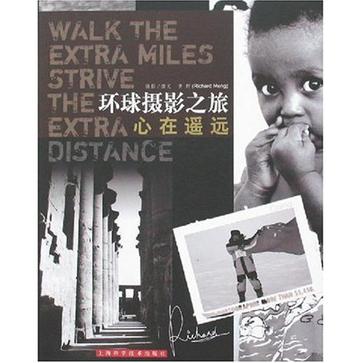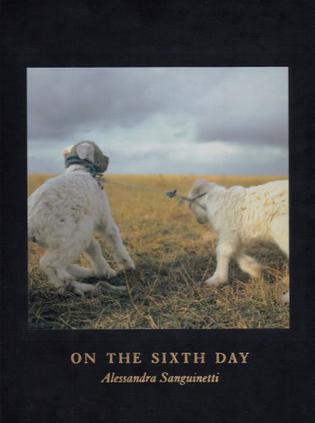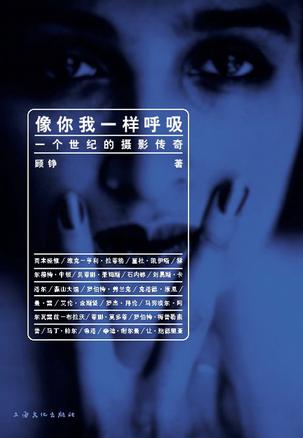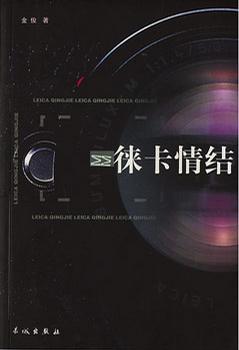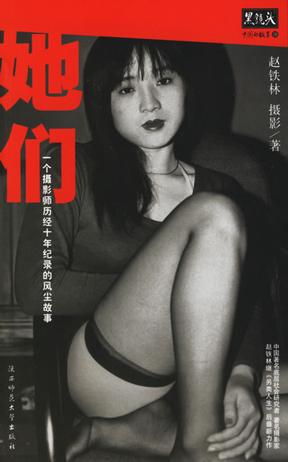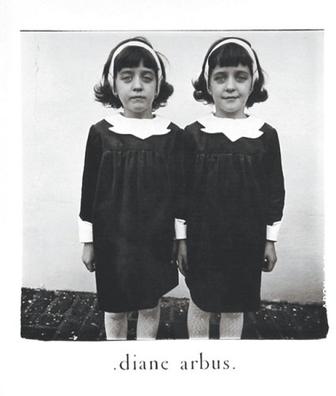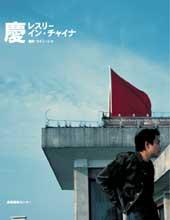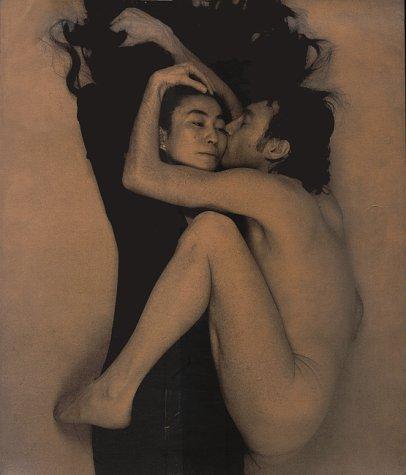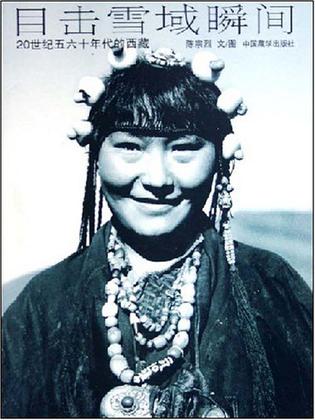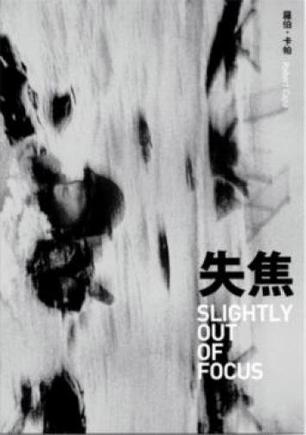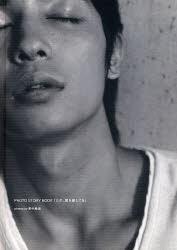欢迎来到相识电子书!
标签:摄影
-
环球摄影之旅-心在遥远
《环球摄影之旅:心在遥远》内容简介:现代旅游已成为全球性的活动,是许多国家和地区社会经济生活中不可缺少的重要组成部分,也是越来越多的人们生活消费的重要内容。这是一本游记,他记录了沿途的秀美风光和异域文化的多彩多姿,道出了旅行即修行的心得。作者通过不于数千里旅程的跨越,真真实实地追求大自然的景色在照片上表现的艺术魅力,也体会了紧张生活中的放松状态,还俯到艺术修养和精神生活在旅游中的写照。 -
On the Sixth Day
Alessandra Sanguinetti’s vivid photographs depicting the coexistence of people and animals might at first sight seem brutal, images to be viewed quickly and erased from the memory. But that would be not only impossible but also a great loss, for here is an arrestingly honest portrayal of the relationship between man and beast as the one raises the other for the ultimate sacrifice. These are not animals endowed with human qualities; they are someone’s livelihood, their means of survival. Sanguinetti took these pictures in a province of Buenos Aires. Here, by roadsides, in fields and in woods, she observed the rituals and traditions of the local farmers whose lives interweave with a host of animals – rabbits, horses, pigs, geese, lambs, cows, chickens – caught in the cycle that is life and death. The work in On the Sixth Day goes beyond straight documentary practice and evokes an intimacy that, confounding our sensibilities, it is a privilege to share. With an essay by Robert Blake, Chair of the General Studies Program at the International Center of Photography, New York. -
Ansel Adams: The Camera
Ansel Adams produced some of the century's truly memorable photographic images and helped nurture the art of photography through his creative innovations and peerless technical mastery. This handbook - the first volume in Adam's celebrated series of books on photographic techniques - has taught a generation of photographers how to harness the camera's artistic potential. It remains as vital today as when it was first published. Along with visualization, image management, Adams' famous Zone System, and other keys to photographic artistry, The Camera covers 35mm, medium-format, and large-format view cameras and offers detailed advice on camera components such as lenses, shutters, and light meters. Beautifully illustrated with photographs as well as instructive line drawings, this classic manual belongs on every serious photographer's bookshelf. -
像你我一样呼吸/一个世纪的摄影传奇
像你我一样呼吸:一个世纪的摄影传奇,ISBN:9787807400721,作者:顾铮 著 -
徕卡情结
“徕卡”只不过是一种照相机!但为什么摄影师们一提徕卡就会换一种表情?为什么众多摄影师心中会系起挥之不去,解之不开的徕卡情结?他还是什么?是利器?是尺度?是精神还是信念? 本书通过采访的方式,用纪实的手法荟萃了二十位徕卡摄影师的甜酸苦辣。书中的观点平铺直叙,没有褒贬,和盘端给读者;书中的故事真真实实,经验独到,十分耐人咀嚼。 二十人在中国摄影界芸芸众生中可谓九牛一毛,但作者的遴选却让每个人风格各异色彩纷呈。通过书中人物的体验,不同读者可品出不同的味道。 -
她们
她们,是这个社会的边缘人群。 她们,从事着古老又始终禁忌的职业——卖春。 她们所在的世界是不为公众所知晓的,关于她们的身世种种、跌宕命运,极少有人真正关心和追究过。 本书作者经历过自己人生的坎坷后,自我放逐至社会的最底层,与这些苦苦挣扎求生的特殊女性群体相遇,拥有着和她们同样的“边缘人”身份与视点。在长达十年之久的共同生活时间里,他以最贴近的距离接触并观察着她们,用笔和镜头忠实记录下她们生自学成才的点滴以及前寺后世的来龙去脉。13万字的完整记录,460张纪实照片,构成了10个女性的人生故事,勾勒出一张灰色的社会百态长卷。 她们,第一次如此真实与直接地展现在这个世界面前。 -
Helmut Newton
What a sketch is for the painter is a Polaroid for the photographer, namely the first formulation of a concept, the raw material of the imagination, as it were. When Helmut Newton published a selection of his Polaroids in Pola Woman in 1992, the subculture called it a stroke of genius. It was the first time that the master let people look directly over his shoulder. We became witnesses to the magic and often intense process by which erotic fantasies become finished images; the preliminary stages of a perfectly styled Newton photograph. It is remarkable, if not astonishing, that even this "raw material" possesses very original qualities and a charm of its own. -
Diane Arbus
Diane Arbus (1923-1971) is renowned for her provocative and unsettling portraits of modern Americans. This book presents a significant body of previously unpublished pictures by Arbus and proposes a radically new way to understand her goals, strategies, and overall work. "Diane Arbus: Family Albums" examines unknown contact sheets from several of Arbus's portrait sessions, including more than 300 photographs she took of a New York family one weekend in 1969. Anthony Lee and John Pultz put to the test Arbus's claim that she was developing a "family album". They present other images Arbus shot for "Esquire" magazine (including pictures of the families of Ricky Nelson, Jayne Mansfield, and Ogden Reid) and discuss her interest in photographic groupings of both traditional and alternative families. Challenging common interpretations of Arbus, the authors reveal a photographer far more savvy with the camera, more aware of photography as an artistic and commercial practice, and more sensitive to the social and cultural tensions of the 1960s than has been acknowledged before. -
Diane Arbus Revelations
Diane Arbus redefined the concerns and the range of the art she practiced. Her bold subject matter and photographic approach have established her preeminence in the world of the visual arts. Her gift for rendering strange those things we consider most familiar, and uncovering the familiar within the exotic, enlarges our understanding of ourselves. Diane Arbus Revelations affords the first opportunity to explore the origins, scope, and aspirations of what is a wholly original force in photography. Arbus’s frank treatment of her subjects and her faith in the intrinsic power of the medium have produced a body of work that is often shocking in its purity, in its steadfast celebration of things as they are. Presenting many of her lesser-known or previously unpublished photographs in the context of the iconic images reveals a subtle yet persistent view of the world. The book reproduces two hundred full-page duotones of Diane Arbus photographs spanning her entire career, many of them never before seen. It also includes an essay, “The Question of Belief,” by Sandra S. Phillips, senior curator of photography at the San Francisco Museum of Modern Art, and “In the Darkroom,” a discussion of Arbus’s printing techniques by Neil Selkirk, the only person authorized to print her photographs since her death. A 104-page Chronology by Elisabeth Sussman, guest curator of the San Francisco Museum of Modern Art show, and Doon Arbus, the artist’s eldest daughter, illustrated by more than three hundred additional images and composed mainly of previously unpublished excerpts from the artist’s letters, notebooks, and other writings, amounts to a kind of autobiography. An Afterword by Doon Arbus precedes biographical entries on the photographer’s friends and colleagues by Jeff L. Rosenheim, associate curator of photographs at The Metropolitan Museum of Art. These texts help illuminate the meaning of Diane Arbus’s controversial and astonishing vision. -
Diane Arbus
"Diane Arbus was no a theorist but an artist. Her concern was not to buttress philosophical positions but to make pictures. She loved photography for the miracles it performs each day by accident, and respected it for the precise intentional tool that it could be, given talent, intelligence, dedication and discipline. Her pictures are concerned with private rather than social realities, with psychological rather than visual coherence, with the prototypical and mythic rather than the topical and temporal. Her real subject is no less than the unique interior lives of those she photographed."--John Szarkowski, 1972, Director, Department of Photography, The Museum of Modern Art "I have never seen pictured like them before, and I am sure I will never see their equal again. They are the product of something beyond the camera, the result of a long, complex and intensely human process. No one can go into the street tomorrow and take a Diane Arbus photograph. That would be merely adjusting a lens and pressing a button. What made her pictures great was everything that happened before she pressed the button."--Douglas Davis, Newsweek, 1984 "Diane Arbus is one of our legends, her monograph a pivotal classic that changed the direction of photography in America. She captures the complexity and the art in reality. The quality that defines her work and separates it from almost all other photography is her ability to empathize on a level far beyond language."--Nan Goldin, Bookforum, 1995 -
Photographs
Seeing so many celebrity photographs from the beginning of Ms. Leibovitz's career unveils many of the most effective methods that she uses to create her deep insights into the subject of the portrait. Although you may feel the subtlety of her work viscerally, these comparisons make it easier to appreciate the purposefulness of how the effects are brilliantly captured. If you are like me, this book will enhance your already deep appreciation of her work. Before going into all the reasons I like this book, let me mention that the book contains tasteful nudity and sexual situations that would probably cause an R rating for a motion picture (or possibly something a bit stronger, like an R plus). Many parents would be uncomfortable with some of their children seeing these images. So judge the appropriateness of this wonderful book for your own family. First, Ms. Leibovitz is looking for the soul of the person. Who are they at the core? This is captured by establishing a composition that overtly expresses this inner kernel of truth. For Roseanne Barr and Tom Arnold, this is captured by mud wrestling. For Muhammad Ali, you see a fully confident, capable man fully comfortable with himself and the world. Second, she captures the subject's personality with posing and expression within the composition. Whoopi Goldberg's playfulness is captured by a composition that has little bits of her beautiful blackness emerging from a milk bath, with a characteristicly wry, happy smile. Third, she shows the social mask that the subject uses. Lily Tomlin's face poses behind a television set image. Diane Keaton is shown wandering around with her face averted from the camera to capture her preference for privacy and appearance of shyness. Keith Haring appears wearing nothing but his painted on designs. Fourth, she connects her subject to another person where that helps to establish part of the person's reality. John Lennon appears in foetal position with Yoko Ono, in that famous image from this book's cover. The Rolling Stones are literally flying through the air at the same time while performing. The Grateful Dead are asleep on each other's shoulders. Interestingly, she is usually able to do this with a humorous, light touch that dispells some of the celebrity power of the person. Fifth, she lets a little slip in composure or a little blemish show where that adds to the underlying reality. Louis Armstrong looks scared in one classic portrait pose, while totally relaxed and in control in a less formal setting. Mick Jagger's partially healed scar is shown in another image. Jodie Foster puts on an intelligent expression that shows the Yale graduate rather than the young female star. Sixth, she captures motion in ways that give the kinesthetics of the person and situation wonderfully. For example, a group of prisoners and family members hug at Soledad Prison in California at Christmas in 1971. You see many different relationships in this one image. It's like a microcosm of all humanity. Here are my favorite images: John Lennon, New York City, 1970 Louis Armstrong, Queens, New York, 1971 Christmas, 1971, Soledad Prison, California The Grateful Dead, San Rafael, California, 1971 Ray Charles, San Francisco, 1972 Lily Tomlin, Los Angeles, 1973 Richard Pryor, Los Angeles, 1974 Andy Warhol, New York City, 1976 Tennessee Williams, Key West, Florida, 1974 Ron Kovic, Santa Monica, California, 1973 The Rolling Stones, Philadelphia, 1975 Brian Wilson, Malibu, California, 1976 Muhammad Ali, Chicago, 1978 Robert Penn Warren, Fairfield, Connecticut, 1980 John Lennon and Yoko Ono, New York City, December 8, 1981 Greg Louganis, Los Angeles, 1984 Bruce Springsteen, Asbury Park, New Jersey, 1987 Whoopi Goldberg, Berkeley, California, 1984 Twyla Tharp, New York City, 1989 Michael Jackson, Los Angeles, 1989 Mikhail Baryshnikov, New York City, 1989 After you have enjoyed the book, I suggest that you make a drawing that does a similar unveiling of someone you know well. You might even consider a self-portrait. Ms. Leibovitz says those are the hardest to do. Look deeply into those all around you and see the truth . . . as well as the fictions. -
目击雪域瞬间
著名摄影家陈宗烈,在本书里用朴实无华的文字,将一幅幅摄影作品的由来及自己当年在西藏的见闻娓娓道来,图文并茂地再现了那个风云激荡的伟大时代。同时,作者对那一时期西藏民俗的、自然的、宗教的、人物的图景也都有个性化的描述,可供读者真切地感受上世纪五六十年代的西藏风貌。 在本书里用朴实无华的文字,将一幅幅摄影作品的由来及自己当年在西藏的见闻娓娓道来,图文并茂地再现了那个风云激荡的伟大时代。同时,对那一时期西藏民俗的、自然的、宗教的、人物的图景也都有个性化的描述,可供读者真切地感受上世纪五六十年代的西藏风貌。文字15万,图片300余幅。装帧别致,印制精美。 -
失焦
歷史並沒有完整的結構。羅伯‧卡帕的照相作品往往也沒有完整的結構,因為他相信歷史,相信照片的本質比照片的形式更重要。在20世紀最動盪的20年間,羅伯‧卡帕的戰地照片作品,成為他自己最佳的代言人。 圍繞在他身邊的只有這幾種人:軍人、酒保、美女、撲克牌友、藝術家、作家。他為蘇菲雅‧羅蘭拍過照,也是海明威的好友。作家Alex Kershaw為卡帕做傳時,用兩組名詞來形容卡帕:香檳與鮮血。 他是猶太人出身,於18歲那年前往柏林開始學習攝影。他最早的成名作品,是在哥本哈根拍攝蘇聯共產黨領袖列夫‧托洛茨基的演講。他的作品與其他人都不同:從距離托洛茨基不到一公尺的地方取景,可看出演講者緊繃的神情,但照片卻不甚完美。 這組照片奠定了他後來取景的方式。「如果你拍不到好照片,」他曾說:「那是因為你距離現場不夠近。」他習慣將鏡頭放在極近的距離,拍攝到戰場上滿面悲傷的哀働婦女,或者是倒臥在血泊中的無辜青年。 《失焦》是卡帕於第二次世界大戰之後,自己親手寫成的自傳性作品,記錄他在1942年間由美國前往英國,為多個雜誌拍攝歐洲戰場狀況的見聞。 從西班牙內戰、中日戰爭、盟軍反攻日、義大利戰場、以色列復國戰爭到韓戰,卡帕一輩子都活在戰場上。他著名的代表作品包含西班牙內戰時的「一個士兵倒地」,以及盟軍登陸諾曼第時在歐哈馬灘頭的照片。這些作品,都成為20世紀歷史事件的代表影像。 卡帕在西班牙戰場拍攝的「一個士兵倒地」,一發表便立刻震動了當時的攝影界,成為戰爭攝影的不朽之作,也成為卡帕的傳世之作。卡帕當時和自己的年輕女友達娜一起到西班牙採訪,但達娜卻不幸死於坦克車下。悲傷的卡帕,從此永遠凝視關注著戰場。他一生的攝影創作多取材於戰爭,把照相機作為揭露戰爭的武器,卡帕說:「相機本身並不能阻止戰爭,但相機拍出的照片可以揭露戰爭,阻止戰爭的發展。」 戰火在他身上留下了不可磨滅的印記,二次大戰後他開始出現心理問題:焦躁不安、暴躁易怒、有嚴重的倖存者愧疚感,經常藉著痛飲來逃避現實。到了1947年,他與法國攝影師布勒松等人共同創設「麥格南攝影合作社」,總算有了新的方向。 1954年5月25的早晨,卡帕在越南的一個小村子醒來,興高采烈地宣布說,今天「一定會採訪到一個漂亮的好故事。」八個小時之後,他跳下自己的吉普車,離開了其他記者,想要更接近法軍推進的現場。在火網中他誤觸地雷而死,得年41歲。 -
Lillian Bassman
With more than 140 of her best images reproduced in stunning tritone, including many never published before and others not seen since they appeared in the pages of the legendary Harper's Bazaar of the 1950s, Lillian Bassman: Women offers a retrospective view of an extraordinary career in photography. At 91 and still hard at work, Bassman is a beloved figure in the pantheon of fashion photographers. Her signature style, once described by Richard Avedon as making "visible that heart-breaking invisible place between the appearance and the disappearance of things," offered a sensuous and intimate vision of modern women. Says Judith Thurman, "Bassman's women--perennially soulful,elusively chic--have the poignance of an endangered species." Well-known art writer and journalist Deborah Solomon contributes an introduction. An illustrated chronology gives a cinematic overview of a remarkable life. -
未完成的旅行
著名旅德摄影艺术家王小慧与化工集团巴斯夫(BASF)继“和谐的魅力”创意摄影大奖赛之后,再度携手推出创意摄影大赛的后续之作《未完成的旅行——从德国带回的照片》。新书由王小慧主编,内容是摄影大赛的获奖者访问德国带回的摄影作品和旅行日记,文字是这些年轻摄影人的思考与感受的独白,图与文不乏幽默风趣,将给中国读者带来中国摄影师眼中别样的德国文化与风情。书名为“未完成的旅行”,是想告诉读者,这种“看”还会继续下去。 -
An Inner Silence
Henri Cartier-Bresson photographed some of the icons of the 20th century, those few people among millions whose images will pass into history. "Henri Cartier-Bresson: Portraits" is a dazzling selection of Cartier-Bresson's most memorable portraits, including such diverse personalities as Pablo Picasso, Carl Jung, Marilyn Monroe, Truman Capote, Lucian Freud, Susan Sontag, Coco Chanel, Jean-Paul Sartre, Che Guevara, Tony Hancock and the Dalai Lama. -
ただ、君を愛してる 玉木宏PHOTO STORY BOOK
瀬川誠人(=玉木宏)ファン必見! 映画「ただ、君を愛してる」の主人公・瀬川誠人を演じる玉木宏の貴重な写真満載の写真集。玉木宏撮影によるフォトギャラリーや、ロングインタビュー、作品紹介など、映画をもっと深く楽しむためのバイブル! -
摄影射手
《摄影射手》描写了亨利·卡蒂埃不同时期的传奇故事,从参与创建马格南图片社到游走世界,一生奉献于摄影事业,并成为20世纪世界范围内最富于传奇色彩的摄影师。 -
控訴虛偽的影像敘事者:黛安‧阿巴斯
當電影《皮相獵人》(FUR)以虛構的腳本來對應謎樣的黛安阿巴斯, 真實人生常與希薇亞普拉斯、芙莉達卡蘿相提並論的黛安阿巴斯,再度成為人們的焦點。 Diane Arbus:我是攝影師,不是女性攝影師 黛安‧阿巴斯是史上最偉大的攝影家之一, 是影像敘事的顛覆者、開創者, 連電影大師史丹利‧庫柏力克也從她的作品獲取靈感。 如同芙莉達‧卡蘿和歐姬芙,她在藝術和私生活方面都極為精彩, 她的傳奇,就像女詩人希薇亞‧普拉斯與瑪麗蓮夢露一般,極富魅力。 黛安‧阿巴斯說:「照片就是關於祕密的祕密。照片告訴你越多,你知道的越少。」本書作者於此開始調查這個祕密——探索她的謎團,設法找出黛安眼光的種種源頭。 一九六五,紐約現代藝術博物館的攝影藏品聯展, 選入了三幅黛安阿巴斯的作品, 展覽期間,館員每早的例行公事就是將這三幅展品上的口水擦掉。 只因她的影像非常直接、原始,剝除所有的矯飾,這讓大眾很不習慣。 黛安阿巴斯拍攝公眾目光看不見的人和世界的私密經驗, 拍攝的對象包括侏儒、雙胞胎、天體營、扮裝癖者和畸人, 大幅改變人們對「可允許拍攝的事物」的看法。 她檢視世界,而非詮釋世界, 她也小心翼翼地探索社會邊緣者和社會中心人士的視覺歧義。 她說,她只害怕自己的內心世界,從不害怕外在的世界。 她不過是想要幫「臉或故事打動她的人」拍照而已, 在影像的巨大衝擊背後,黛安阿巴斯不過只是凝視真實世界的敘事者。 一九七一年,她結束了自己的生命,作品已經成為時代圖像誌的一部份, 然而,黛安阿巴斯本人仍是一個謎。 本書是黛安阿巴斯最權威的傳記,對她的一生做了極為詳盡的描繪, 帶領讀者理解這位傳奇攝影師的世界與攝影觀點。 非常迷人……一本令人信服的傳記……極有價值,對美國一九五○、六○年代的文化史有深入的見解,對阿巴斯的特殊地位也有深刻的理解。 ——《華盛頓郵報書世界》(Washington Post Book World)書評 縈繞不去,令人心煩意亂……包斯華帶領我們接近她的傳主——靠近到令人著急的地步。 ——《紐約時報》的克里斯多夫‧李曼赫普特(Christopher Lehmann-Haupt) 這本傳記包含了多位藝術界傳奇性人物的豐富史料……派翠西亞‧包斯華的刻畫引人入勝。 ——《紐約》雜誌的安德魯‧霍勒倫(Andrew Holleran)
热门标签
下载排行榜
- 1 梦的解析:最佳译本
- 2 李鸿章全传
- 3 淡定的智慧
- 4 心理操控术
- 5 哈佛口才课
- 6 俗世奇人
- 7 日瓦戈医生
- 8 笑死你的逻辑学
- 9 历史老师没教过的历史
- 10 1分钟和陌生人成为朋友

